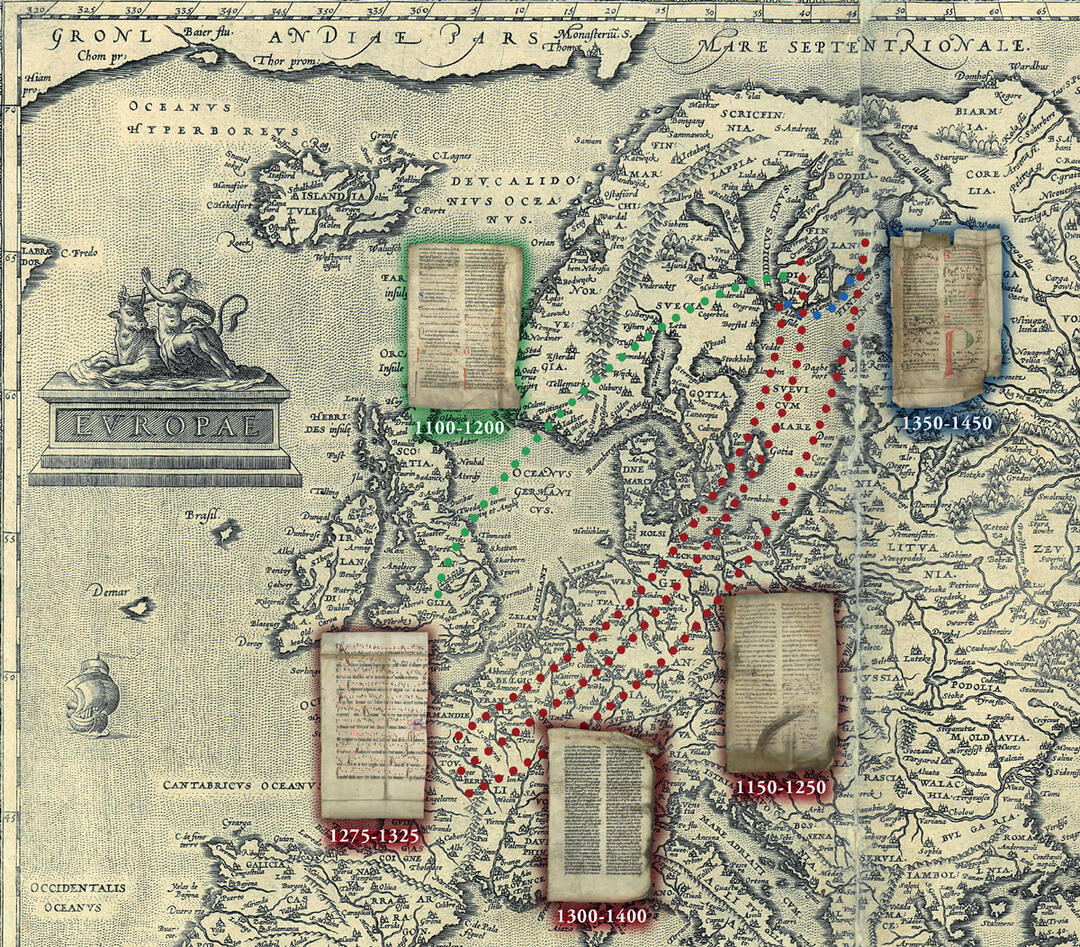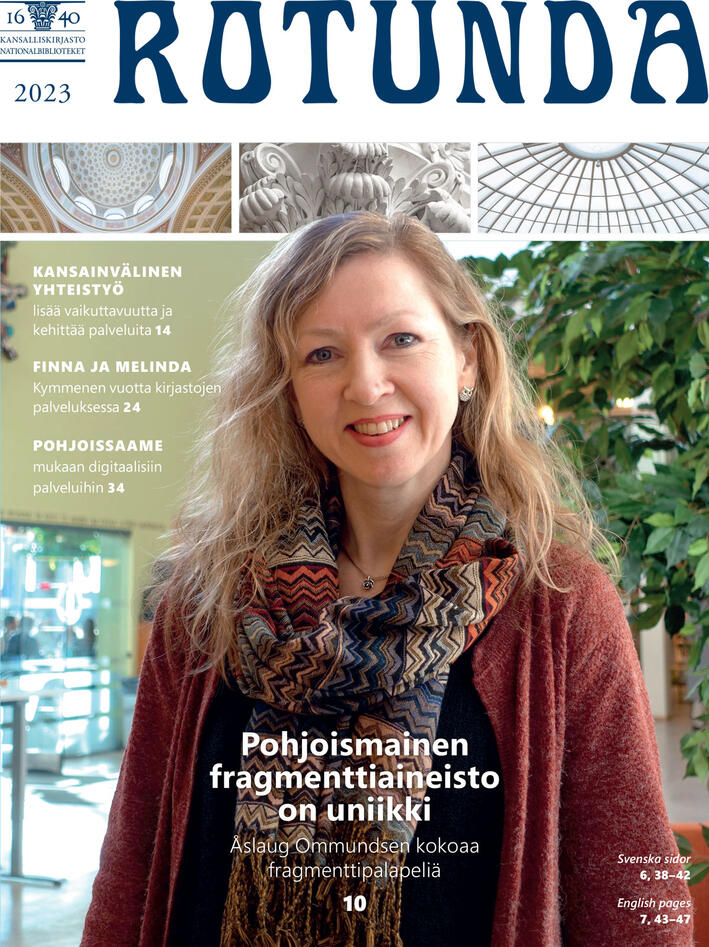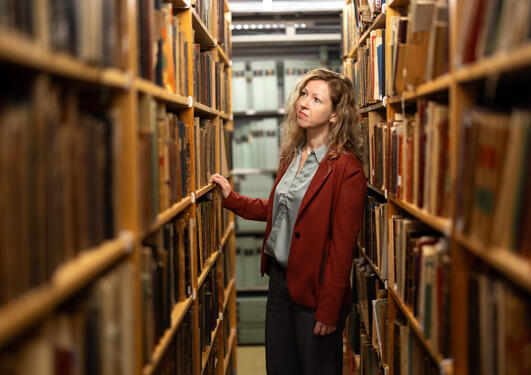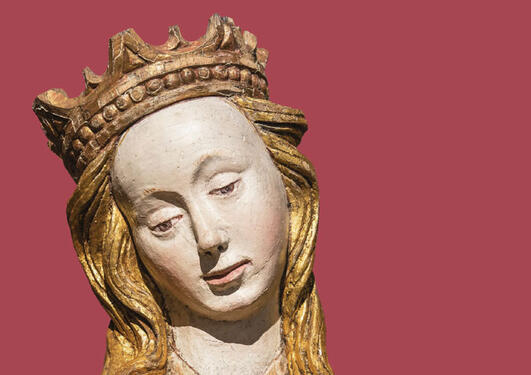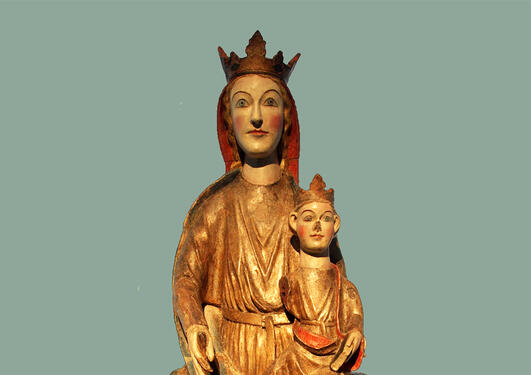Book fragments from the Middle Ages reveal their secrets
In the Nordic countries, tens of thousands of pages from liturgical books from the Middle Ages have been preserved. An international network of researchers has formed around the materials.

Main content
The National Library of Finland’s Fragmenta Membranea collection includes around 9,300 parchment leaves from around 1,500 manuscripts from the Middle Ages, mostly from liturgical books used in churches. With the Reformation, Catholic missals became redundant, but starting from the 1530s, their sturdy and durable material found a new use, as bailiffs used it for their bookkeeping cover leaves.
In the Kingdom of Sweden, all tax administration documents were archived in Stockholm, but in 1809, when Russia annexed Finland, materials pertaining to Finland were moved to Finland – and with them, thousands of manuscript pages from the Middle Ages as their covers. The accounts of the bailiffs are kept in the National Archives of Finland, but a collection consisting of their cover leaves is kept at the National Library of Finland.
"Fragments belonging to the same book have been scattered around Finland and Sweden and sometimes Denmark and Norway as well," says Jaakko Tahkokallio, Senior Researcher at the National Library of Finland. He leads the research project focused around the fragment collection.
In Norway, which was back then a part of Denmark, the practices were similar with the same kinds of materials. With around 40,000 leaves, the collection in Stockholm is the largest of these. In Finland and Norway, there has been most focus on researching the fragments.
"In Sweden, for example, there is much more to explore for those interested in medieval manuscripts," says Professor of Medieval Latin Philology Åslaug Ommundsen from the University of Bergen.
"Finland and Norway are in the same boat in the sense that very few complete manuscripts have been preserved, and therefore the collection of fragments has attracted more interest," she says.
A puzzle of tens of thousands of pieces
Åslaug Ommundsen is one of the central figures in Nordic fragment research, as she has focused on the research of this material for two decades.
During the master's phase, she studied medieval manuscripts in the Vatican library, but after that she wanted to find something local to study.
"I asked a professor from Oslo what he would recommend, but he said that no medieval books in Latin have survived in Norway. Later I found out by chance that they do exist – they're just in thousands of loose pieces."
Ommundsen was immediately interested in the material, and after getting to know it in more detail, she was sold.
"As a source material, the collection of fragments is fascinating and versatile – we just have to try to put the puzzle together to get to the bottom of it."
Ommundsen has studied what the fragments tell about the medieval liturgy, its music and the cult of saints.
"90 percent of the Norwegian fragments come from liturgical books, and I already had contact with the liturgy because I have also worked as an organist. In many fragments, the tunes are also marked as sheet music, and although I'm not a musicologist, the musical side is also interesting."

The fragments preserved in Norwegian collections are mainly Finnish and not very often Swedish. Several of them were written before 1200, such as this one with sheet music in the picture page of a liturgical book.
The fact that pages belonging to the same book have ended up in collections located in different countries brings its own challenge to the puzzle, more than previously understood.
"That's why Nordic cooperation is so essential. The research atmosphere is open and good, and it is a pleasure to work with competent people, such as Jaakko Tahkokallio or church history professor Tuomas Heikkilä. For example, we have cooperated with them for 20 years already, and hopefully we will continue for another 20 years. The staff at the archives are helpful and the materials have been digitized, so materials located in different countries can be easily accessed. If this were not the case, research would be difficult."
Part of the European cultural heritage
In their time, the books were not rarities or masterpieces, but were used in ordinary parish churches on a daily basis – the priests used them to check the progress of every mass and devotional time of the year.
"What makes the collection interesting is precisely the fact that no one has selected the material to be preserved, but it has been preserved without selection and by chance," says Ommundsen.
Similar books were used all over Europe, but elsewhere than in the Nordic countries, they have not survived precisely because of their everydayness.
"The Nordic fragmentary material is unique on a European scale, and provides such information about the liturgy of the Middle Ages and its local and temporal variation that is not available elsewhere. At the same time, it strongly connects us to a wider European cultural heritage."

There was already a commercial book market in the Middle Ages
Books copied by the same scribe have started to be recognized by the style of the initials and decorations on the books. One such cluster contains the remains of forty books copied by the same work group in London in the early 13th century. Copying books has been a professional job.
"In the first year of our research project, this group of books has been studied a lot, which churches the books have ended up in and why," says Jaakko Tahkokallio.
"It has been an interesting observation that the books have ended up in the emerging centers of royal power in the early 13th century. It seems that the king has acted as a financier in a project made in cooperation with the bishops. The acquisition has been big, and the delivery of the books has taken years, as it has taken at least half a year to copy one book."
The massive Book Order has been made at a time when the fragmented society of the Viking Age has been transitioning to a centralized government.
"The transition happened through a change in the religious worldview – the God of Christianity was the ruler of the entire universe, and he delegated absolute power to the king at the local, state level."
Copying books by hand ended when Gutenberg invented the printing press, but without the developed, commercial book market of the Middle Ages and the established demand for books, the invention might not have been made.
